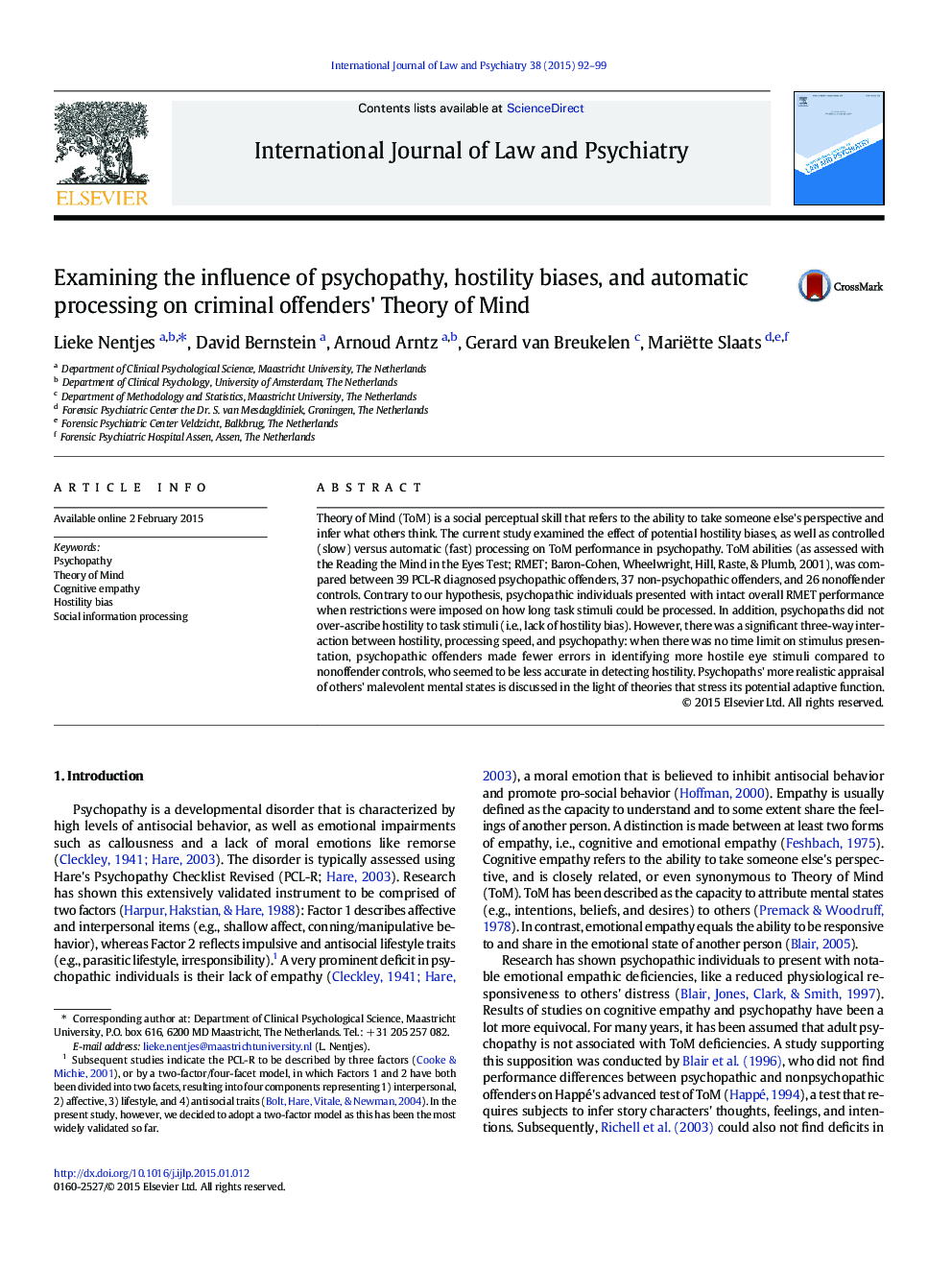| Article ID | Journal | Published Year | Pages | File Type |
|---|---|---|---|---|
| 6554682 | International Journal of Law and Psychiatry | 2015 | 8 Pages |
Abstract
Theory of Mind (ToM) is a social perceptual skill that refers to the ability to take someone else's perspective and infer what others think. The current study examined the effect of potential hostility biases, as well as controlled (slow) versus automatic (fast) processing on ToM performance in psychopathy. ToM abilities (as assessed with the Reading the Mind in the Eyes Test; RMET; Baron-Cohen, Wheelwright, Hill, Raste, & Plumb, 2001), was compared between 39 PCL-R diagnosed psychopathic offenders, 37 non-psychopathic offenders, and 26 nonoffender controls. Contrary to our hypothesis, psychopathic individuals presented with intact overall RMET performance when restrictions were imposed on how long task stimuli could be processed. In addition, psychopaths did not over-ascribe hostility to task stimuli (i.e., lack of hostility bias). However, there was a significant three-way interaction between hostility, processing speed, and psychopathy: when there was no time limit on stimulus presentation, psychopathic offenders made fewer errors in identifying more hostile eye stimuli compared to nonoffender controls, who seemed to be less accurate in detecting hostility. Psychopaths' more realistic appraisal of others' malevolent mental states is discussed in the light of theories that stress its potential adaptive function.
Related Topics
Health Sciences
Medicine and Dentistry
Forensic Medicine
Authors
Lieke Nentjes, David Bernstein, Arnoud Arntz, Gerard van Breukelen, Mariëtte Slaats,
